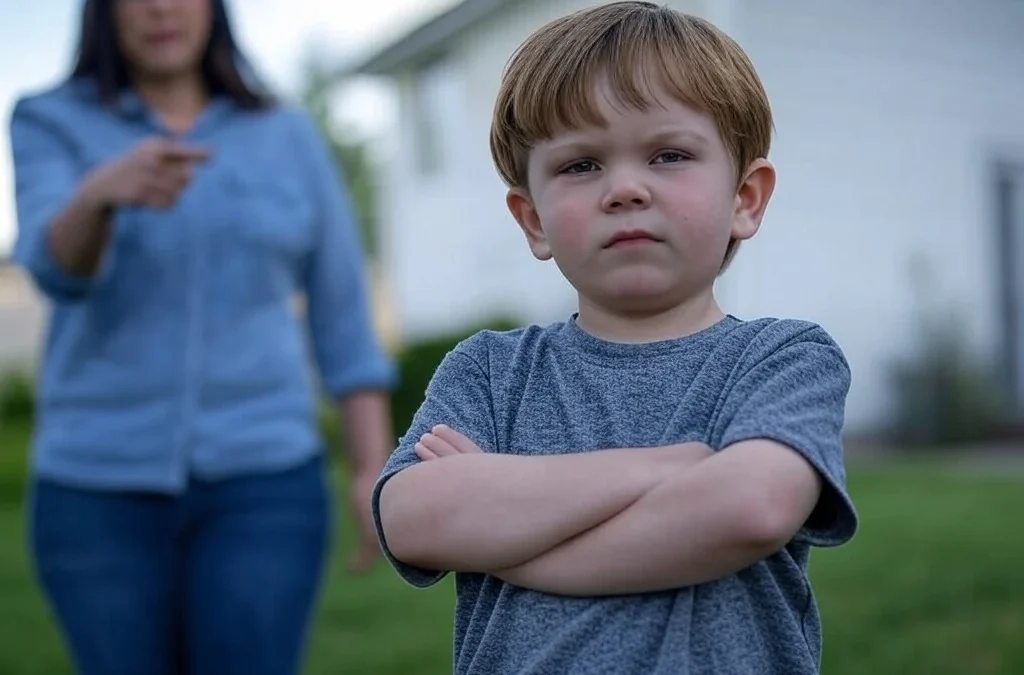Have you ever bumped into an old friend at the grocery store just when you were thinking about them? Or stumbled upon the perfect book at a second-hand shop that seemed to speak directly to your current situation? These are moments of serendipity – those delightful surprises that seem to happen by chance but feel almost magical. Serendipity can turn an ordinary day into something extraordinary, reminding us that life is full of unexpected and pleasant surprises.
In this article, we’ll explore 20 examples of serendipity that highlight how these happy accidents can change our lives. From scientific discoveries made by mistake to chance encounters that led to lifelong friendships, serendipity often plays a bigger role in our lives than we might think. These stories will inspire you to look for the silver linings and unexpected joys in your everyday experiences, proving that sometimes, the best things happen when we least expect them.
Understanding Serendipity
Serendipity is a fascinating concept that refers to the occurrence of unexpected yet fortunate events. It is often described as the process of making happy discoveries by accident. The term was coined by Horace Walpole in the 18th century, inspired by a Persian fairy tale, “The Three Princes of Serendip,” whose protagonists were known for their ability to make fortunate discoveries by chance.
In essence, serendipity is about the surprising and beneficial outcomes that arise when we are open to new experiences and opportunities. It is not just about luck; rather, it involves a combination of chance and the ability to recognize and seize opportunities when they present themselves.
Serendipity plays a significant role in many areas of life, including scientific discoveries, personal relationships, and creative endeavors. Many groundbreaking innovations and ideas have emerged from serendipitous moments, where a chance observation or an unexpected encounter led to a profound insight or solution.
To experience serendipity, it is important to cultivate an open mind, curiosity, and a willingness to explore the unknown. This mindset helps us recognize and appreciate the potential in unforeseen events, transforming what might initially seem random into something meaningful and beneficial.
The Best Real-Life Examples of Serendipity
Serendipity has shaped history in remarkable ways, from groundbreaking inventions to chance encounters that changed lives forever. These real-life examples show how unexpected moments can lead to extraordinary outcomes.
1. The Discovery of Penicillin
In 1928, Alexander Fleming was researching bacteria when he noticed something unusual. A mold called Penicillium notatum had contaminated one of his petri dishes, killing the bacteria around it. This unexpected observation led to the discovery of penicillin, the first true antibiotic, which has saved countless lives since.
2. The Creation of Post-it Notes
In the 1970s, Spencer Silver, a scientist at 3M, was attempting to create a super-strong adhesive. Instead, he accidentally developed a weak adhesive that stuck lightly to surfaces and could be removed easily. Years later, his colleague Art Fry found a use for it in creating bookmarks that wouldn’t fall out of his hymnal, leading to the invention of Post-it Notes.
3. The Microwave Oven
Percy Spencer, an engineer working on radar technology during World War II, noticed something curious when a chocolate bar in his pocket melted while he was experimenting with microwave emitters. This serendipitous observation led to the development of the microwave oven, revolutionizing cooking in households worldwide.
4. The Invention of Velcro
In 1941, Swiss engineer George de Mestral went for a walk in the woods and returned with burrs clinging to his clothes. Curious about how they stuck so effectively, he examined them under a microscope. This led to the creation of Velcro, a hook-and-loop fastener that has become ubiquitous in clothing and other applications.
5. The Accidental Invention of the Slinky
During World War II, mechanical engineer Richard James was working with tension springs to stabilize sensitive equipment on ships. One of the springs fell to the ground and began to “walk” across the floor. This unexpected behavior inspired James to create the Slinky, a toy that became a classic and is still enjoyed by children today.
6. The Discovery of LSD
In 1943, Swiss chemist Albert Hofmann was researching medicinal compounds when he accidentally absorbed a small amount of lysergic acid diethylamide (LSD) through his skin. The resulting experience led to the discovery of LSD’s powerful psychoactive effects, influencing various fields, including psychology and psychiatry.
7. The Origin of the X-ray
In 1895, Wilhelm Conrad Roentgen was experimenting with cathode rays when he noticed a fluorescent glow coming from a nearby chemically coated screen. Intrigued, he realized that he had discovered a new type of ray capable of passing through solid objects. This accidental discovery led to the development of X-ray technology, which has had a profound impact on medicine.
8. The Sweet Story of Saccharin
In the late 19th century, chemist Constantin Fahlberg was working with coal tar derivatives. After a long day in the lab, he forgot to wash his hands before eating and noticed a sweet taste on his fingers. This chance discovery led to the creation of saccharin, the first artificial sweetener.
9. The Discovery of Vulcanized Rubber
In 1839, Charles Goodyear accidentally dropped a mixture of rubber and sulfur onto a hot stove. Instead of melting, the mixture charred, but remained elastic and durable. This unexpected result led to the process of vulcanization, which made rubber a practical material for industrial and everyday use.
10. The Birth of Corn Flakes
In the late 19th century, John Kellogg and his brother Will were trying to make a new type of bread dough. They accidentally left some boiled wheat out overnight, which went stale. Instead of discarding it, they rolled it out, creating flakes that they toasted and served. This happy accident led to the creation of corn flakes, a breakfast staple enjoyed by millions.
11. The Invention of the Pacemaker
In the late 1950s, engineer Wilson Greatbatch was working on a heart rhythm recording device when he accidentally used the wrong resistor. To his surprise, the circuit emitted rhythmic electrical pulses. Realizing its potential, Greatbatch refined the design, leading to the development of the implantable pacemaker, a life-saving device for those with heart issues.
12. The Discovery of Teflon
In 1938, chemist Roy Plunkett was experimenting with refrigerants when a cylinder of gas he was working with stopped flowing. Curious, he cut open the cylinder and found a slippery white powder inside. This accidental discovery turned out to be polytetrafluoroethylene, later branded as Teflon, which revolutionized non-stick cookware.
13. The Creation of the Inkjet Printer
In the 1970s, a Canon engineer accidentally rested a hot soldering iron on a pen, causing ink to spurt out of the tip. This unexpected event inspired the concept of using heat to propel ink onto paper, leading to the development of inkjet printing technology, which has since become a standard in printing.
14. The Accidental Invention of the Popsicle
In 1905, 11-year-old Frank Epperson left a mixture of powdered soda, water, and a stirring stick outside overnight. The next morning, he found it frozen solid. He dubbed his creation the “Epsicle,” which later became known as the Popsicle. This sweet treat has been enjoyed by generations ever since.
15. The Discovery of Anesthesia
In the 1840s, dentist Horace Wells attended a demonstration of nitrous oxide, commonly known as laughing gas, and noticed that people under its influence felt no pain. This observation led him to use it during dental procedures, paving the way for the development of anesthesia, which transformed surgical practices.
16. The Birth of Safety Glass
In 1903, French chemist Édouard Bénédictus accidentally knocked a glass flask off a shelf. To his surprise, the glass didn’t shatter into pieces. He discovered that the flask had been coated with a thin layer of plastic cellulose nitrate, leading to the invention of safety glass, which is now used in car windshields and other applications.
17. The Creation of Super Glue
During World War II, Dr. Harry Coover was searching for materials to make clear plastic gun sights. Instead, he stumbled upon a sticky substance that was initially dismissed as a failure. Years later, it was revisited and developed into Super Glue, a powerful adhesive used in countless applications today.
18. The Accidental Discovery of Plastic
In 1907, Leo Baekeland was trying to develop a synthetic substitute for shellac. Instead, he created Bakelite, the first synthetic plastic. This versatile material found widespread use in electrical insulators, radio and telephone casings, and many other products, marking the beginning of the modern plastics industry.
19. The Discovery of the Smallpox Vaccine
In the late 18th century, Edward Jenner observed that milkmaids who had contracted cowpox didn’t catch smallpox. He hypothesized that exposure to cowpox could protect against smallpox. Jenner tested his theory and successfully developed the first vaccine, which ultimately led to the eradication of smallpox.
20. The Invention of the Chocolate Chip Cookie
In 1938, Ruth Wakefield was making chocolate cookies when she ran out of baker’s chocolate. She substituted it with broken pieces of Nestlé semi-sweet chocolate, expecting them to melt and blend into the dough. Instead, the chocolate held its shape, creating the first batch of chocolate chip cookies, a beloved dessert worldwide.
How to Cultivate Serendipity in Daily Life
Serendipity often starts with a mindset. It’s about staying open to the unexpected and finding joy in the little surprises life brings. While you can’t force serendipity, there are ways to create opportunities for it to occur more often. Start by saying yes more frequently. Attend events, meet new people, and explore places you haven’t been before. When you expand your world, you give chance the room it needs to work its magic.
Curiosity is another key ingredient. Ask questions, listen closely, and show genuine interest in others. Even casual conversations can spark ideas or lead to unexpected connections. If you’re stuck in a routine, break it up. Take a different route to work, try a new hobby, or pick up a book on a topic you know nothing about. Often, serendipity finds us when we’re out of our comfort zones.
Technology can also play a role. Social media and online forums can connect you with people and ideas you might never encounter otherwise. But balance is essential. Spend time offline too, where face-to-face interactions and unplanned encounters happen. Be patient. Serendipity isn’t about instant results; it’s about trusting that good things can come from unexpected places. Over time, these moments can enrich your life in ways you never anticipated.
The Role of Chance in Scientific Discoveries
Throughout history, chance has played a crucial role in many scientific breakthroughs. While meticulous planning and experimentation are the cornerstones of research, serendipitous moments have often led to unexpected discoveries that changed the world. For instance, the discovery of penicillin by Alexander Fleming in 1928 was a happy accident. Fleming noticed that a mold had contaminated one of his petri dishes and was killing the surrounding bacteria. This observation, which could have easily been dismissed as a lab mishap, led to the development of antibiotics, revolutionizing medicine.
Another example is the discovery of X-rays by Wilhelm Conrad Röntgen in 1895. While experimenting with cathode rays, Röntgen noticed a fluorescent glow on a nearby screen. Intrigued, he investigated further and realized he had discovered a new type of ray, which could pass through solid objects and reveal the structure of bones within the human body. This accidental finding paved the way for modern diagnostic imaging.
These examples illustrate that while structured research is essential, being open to unexpected results can lead to groundbreaking advancements. Encouraging an environment where curiosity and observation are valued can foster more moments of serendipity in science. Scientists who are willing to explore the unexpected can uncover new paths and possibilities, often leading to innovations that were never part of the original plan. In this way, chance encounters with the unknown continue to shape the landscape of scientific progress.
The Origins and Concept of Serendipity
The term “serendipity” was coined in 1754 by Horace Walpole, an English writer and politician. He was inspired by a Persian fairy tale called “The Three Princes of Serendip,” where the protagonists made discoveries by accident and sagacity of things they were not in quest of. This historical context is crucial for understanding what serendipity means today – an unexpected discovery that happens by chance. The concept has evolved to represent those moments when something fortunate happens unexpectedly, often leading to beneficial outcomes. In many ways, serendipity is about being open to the unexpected and recognizing the potential in these chance occurrences. It’s not just about luck; it requires a certain mindset to see and seize opportunities as they arise. This understanding has made the term popular in various fields, from science to business, where accidental discoveries have led to significant innovations and breakthroughs.
Serendipity in Business and Entrepreneurship
In business, some of the greatest breakthroughs have come from chance moments. But successful entrepreneurs don’t just stumble upon these moments – they prepare for them. They stay observant, adaptable, and ready to act. Take the story of Instagram. It started as a location-based app, but the founders noticed that users were most excited about the photo-sharing feature. By paying attention to this unexpected insight, they pivoted and built one of the most popular social media platforms ever.
Sometimes, serendipity is about recognizing a solution you weren’t even looking for. The invention of Post-it Notes is a perfect example. A failed experiment in adhesives became a global success when someone saw its potential for note-taking. Stories like this show how being flexible and open to possibilities can lead to unexpected success.
Networking also plays a huge role in business serendipity. A casual coffee chat can turn into a partnership, and a chance meeting at a conference might lead to your next big idea. Building relationships, even without a clear agenda, often leads to opportunities down the road. The key is to stay open-minded and proactive, without trying to control every outcome.
Whether you’re launching a startup or growing a small business, serendipity can be your quiet ally. It might not be predictable, but it rewards those who keep their eyes and minds open. What looks like luck from the outside often comes from years of preparation, observation, and the courage to act on an unexpected opportunity.
Serendipity in Modern Technology and Innovation
In the age of technology, serendipity plays a unique role in innovation and creativity. Many technological advancements have emerged from accidental discoveries, where the original intention was quite different. For instance, the creation of Post-it Notes by 3M was not a planned innovation but resulted from a failed attempt to develop a strong adhesive. In today’s digital landscape, algorithms and data analytics are designed to predict and control outcomes, yet serendipity still finds its place. Platforms like social media and streaming services use algorithms to suggest content, but users often stumble upon unexpected and valuable content that they may not have found otherwise. This aspect of serendipity is crucial in fostering creativity, as it allows individuals to connect seemingly unrelated ideas, leading to new insights and innovations. The balance between controlled algorithms and the randomness of serendipity is a fascinating area of exploration, showing that even in a world driven by data, the unexpected can lead to remarkable discoveries.
Serendipity and Creativity: A Source of Inspiration
Creativity often thrives on serendipity. Artists, writers, and musicians frequently find inspiration in unexpected places. A chance encounter or a random conversation can spark a new idea or perspective. For example, many authors have found their next book idea while overhearing a conversation in a café. Musicians might stumble upon a melody while playing around on their instruments with no particular purpose. This randomness can be a powerful catalyst for creativity. It encourages people to step out of their comfort zones and explore new possibilities. Sometimes, a creative block can be broken by simply being open to the unexpected. In a world where precision and planning are often valued, serendipity reminds us of the beauty of unpredictability. It encourages us to remain curious and open-minded, allowing inspiration to strike from any direction.
Read also: Apathy: 20 Examples & Definition
The Most Popular on BitGlint

Top 100 Personal Items List
Everyone uses personal items in their daily lives, often without even thinking about them. From the moment you wake up...

30 Defiance Examples & Meaning
Defiance is something most people experience at some point in life. You feel it when you say no to something that...

Top 30 Desire Examples & Definition
Desire is a powerful force that drives much of human behavior, shaping our goals, dreams, and everyday decisions. It's...

100 Non-Digital Things List
In everyday life, there are still hundreds of objects, tools, and materials that exist completely outside the digital...

30 Examples of Attention & Definition
Have you ever noticed how a catchy tune can grab your attention, even when you're busy doing something else? It's...

60 Cultural Traditions Examples & Definition
Cultural traditions are part of daily life - whether people realize it or not. They shape what we eat, how we...

Top 30 Intimacy Examples & Meaning
Intimacy goes beyond physical touch or romantic moments. It’s about closeness, trust, and connection. In everyday...
Get Inspired with BitGlint
The Latest
40 Emotional Value Examples & Meaning
Why do some messages stick — while others are forgotten? Why do people choose one brand over another, even when the product is the same? The answer often comes down to emotional value. Emotional value is what makes a message feel human. It’s the emotional connection...

30 Teasing Examples & Definition
Teasing is a common part of human interaction. People tease in different ways, for different reasons. Sometimes it is friendly. Sometimes it can hurt feelings. Understanding what teasing means and seeing clear examples helps everyone handle these moments better....
40 Thought Experiments for Curious Minds
Some questions can’t be answered with a simple yes or no. Some problems don’t have a clear solution. That’s where thought experiments come in. They aren’t just old ideas from philosophy books. Thought experiments are tools we still use to think through problems, test...
20 Compromise Examples & Definition
Finding a middle ground is something we do every day, often without even realizing it. Imagine you and your friend want to watch a movie. You’re in the mood for a thriller, but your friend prefers a comedy. Instead of arguing, you both agree on a light-hearted mystery...

